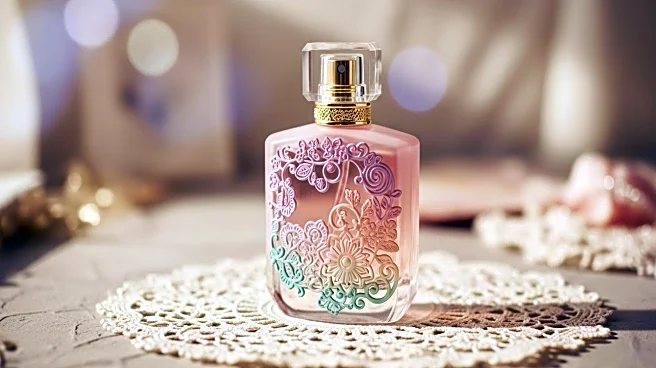What's Happening?
LoveShackFancy, a fashion brand known for its romantic and coquette style, has partnered with the dating app Tinder to launch a new fragrance called 'Secret Crush.' This collaboration marks LoveShackFancy's first foray into the fragrance market, featuring a gourmand scent with a vanilla base and notes of coconut and caramel. The partnership aims to leverage Tinder's extensive platform to reach college-aged women, a key demographic for both brands. As part of the launch, Tinder is supporting LoveShackFancy in creating a pop-up café in New York, which could serve as a prototype for future global expansions. This initiative aligns with Tinder's strategy to enhance user experiences and attract more young women to the app.
Why It's Important?
This collaboration highlights a growing trend of cross-industry partnerships aimed at expanding brand reach and consumer engagement. For LoveShackFancy, entering the fragrance market represents a strategic diversification of its product offerings, potentially increasing its market share in the beauty industry. For Tinder, the partnership is a strategic move to solidify its presence among young women, who are crucial to its user base. By integrating beauty products into its platform, Tinder is positioning itself as more than just a dating app, but as a lifestyle brand that caters to the interests of its users. This could lead to increased user engagement and retention, benefiting both brands financially and in terms of market positioning.
What's Next?
The success of this collaboration could pave the way for more partnerships between dating apps and lifestyle brands, particularly in the beauty sector. Tinder plans to continue exploring similar collaborations, especially in the fragrance domain, to further engage its audience. LoveShackFancy, on the other hand, is considering expanding its beauty line, potentially with the guidance of major retailers like Sephora. The pop-up café concept in New York could also be expanded globally, creating new retail and experiential opportunities for the brand. Stakeholders in both companies will likely monitor consumer response closely to inform future strategic decisions.











